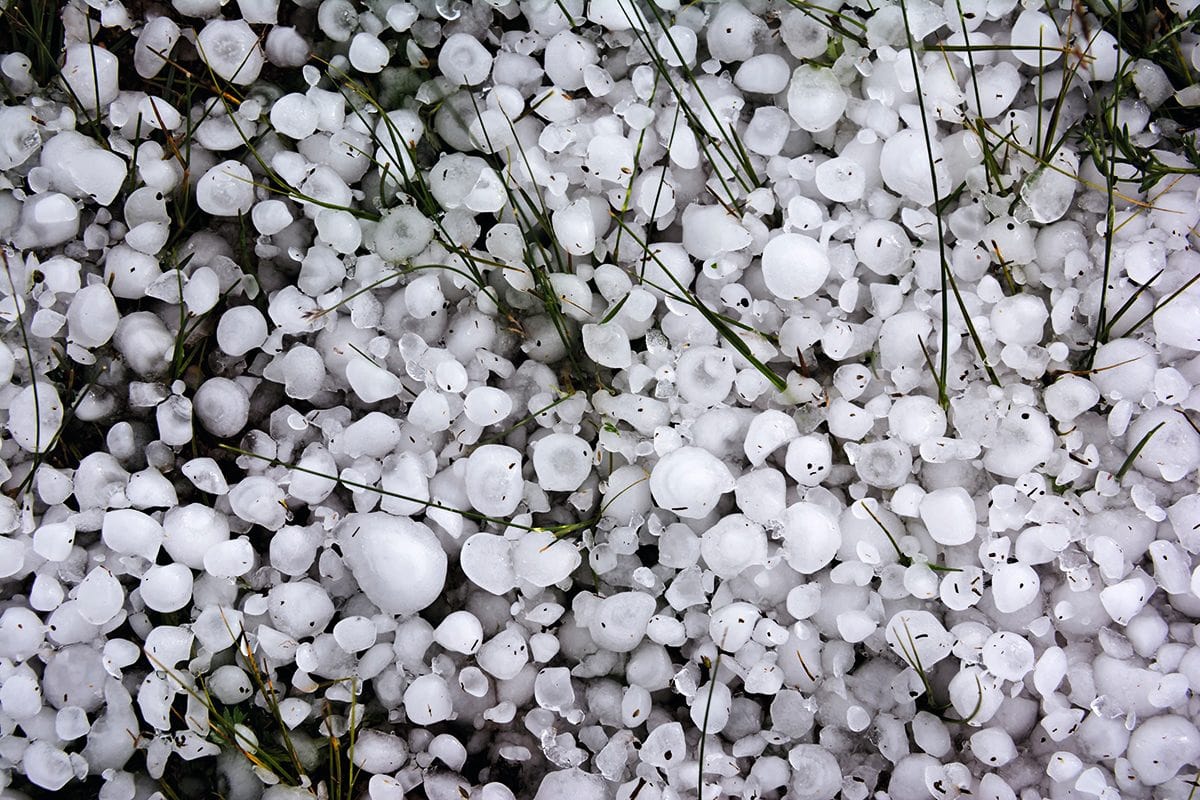
30 interesting facts about Hail
- 👁️ 288
Hail is one of nature’s most fascinating weather phenomena, capable of forming in strong thunderstorm clouds and falling to the ground as balls or irregular lumps of ice. While often associated with cold weather, hail can occur during any season in thunderstorms where the conditions are right. The process of hailstone formation is complex, involving updrafts, supercooled water, and repeated cycles within a cloud. Hail can range in size from tiny pellets to large, grapefruit-sized stones that can cause significant damage to crops, property, and even pose risks to life. Here are 30 interesting and informative facts about hail that reveal the intricacy and power of this weather event.
- Hail forms in strong thunderstorm clouds known as cumulonimbus clouds.
- Hailstones begin as supercooled water droplets that freeze upon contact with condensation nuclei, such as dust or dirt.
- Updrafts within the storm cloud repeatedly carry the forming hailstones upward, where layers of ice accumulate on them.
- The size of a hailstone is determined by the strength of the updrafts within the thunderstorm.
- Hailstones can measure from 5 millimeters in diameter, known as pea-sized hail, to over 15 centimeters, known as grapefruit-sized hail.
- The largest hailstone in terms of diameter and weight recorded in the United States fell in Vivian, South Dakota, on July 23, 2010, measuring nearly 8 inches in diameter and weighing almost 2 pounds.
- Hail is most common in the interiors of continental landmasses, where thunderstorms are more intense.
- The presence of large amounts of moisture in the atmosphere is critical for hail formation.
- Hail causes approximately $1 billion in damage to crops and property in the United States each year.
- The “Hail Alley” in North America, where hail is most frequent, includes parts of Colorado, Nebraska, and Wyoming.
- Hail season in this region typically runs from March to October, with the peak occurrence in June and July.
- Hailstones often have concentric layers, similar to the rings of a tree, each layer representing a cycle the stone underwent within the cloud.
- Hail can fall at speeds faster than 100 mph, depending on the size of the hailstone and the strength of the storm.
- Vehicles, roofing, and agriculture are most susceptible to hail damage.
- Hail suppression programs, which involve cloud seeding, have been experimented with to reduce the size of hailstones.
- Hailstorms can accompany tornadoes and other severe weather events.
- Unlike sleet, which forms in winter storms, hail forms in thunderstorms and is not associated with the ground temperature.
- The deadliest hailstorm recorded occurred in India on April 30, 1888, where over 240 people were killed.
- Scientists study hailstones by slicing them open to reveal their layered structure and composition.
- Hailstones can be clear or opaque, depending on the presence of air bubbles within the ice.
- The formation of hail is more likely in the afternoon and early evening, coinciding with the peak intensity of thunderstorms.
- The term “hailstorm” specifically refers to a storm where hail reaches the ground.
- Hail detection is part of the severe weather monitoring activities of meteorological agencies.
- Crop nets and specialized roofing materials have been developed to protect against hail damage.
- Hail can also occur on other planets with atmospheres, such as Venus and Jupiter.
- In folklore, large hailstorms were often interpreted as signs of divine displeasure or omens of significant events.
- The World Meteorological Organization maintains records of significant hail events and their impacts.
- Hailstones sometimes exhibit spikes or unusual shapes, caused by collisions with other hailstones or water droplets during their formation.
- Hail pad collectors, flat surfaces placed at strategic locations, are used by researchers to study hailstone size distribution.
- The Guinness World Record for the heaviest hailstone is held by a stone that fell in Gopalganj District, Bangladesh, on April 14, 1986, weighing 2.25 pounds.
Hail is a powerful and intriguing weather phenomenon that underscores the complexity of Earth’s atmospheric processes. Its ability to cause widespread damage makes it a significant concern for meteorologists, farmers, and insurers alike. Understanding hail and its impacts not only helps in mitigating its effects but also deepens our appreciation for the dynamic nature of the planet’s weather systems. As research into hail continues, we can hope to better predict and perhaps even lessen the destructive power of future hailstorms.
Hail is one of nature’s most fascinating weather phenomena, capable of forming in strong thunderstorm clouds and falling to the ground as balls or irregular lumps of ice. While often associated with cold weather, hail can occur during any season in thunderstorms where the conditions are right. The process of…